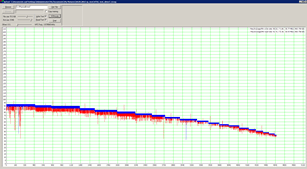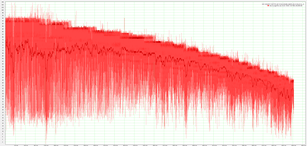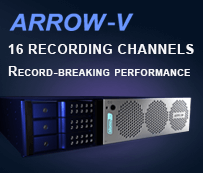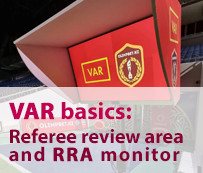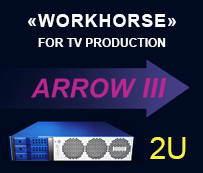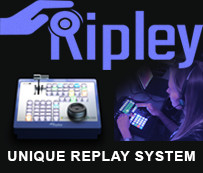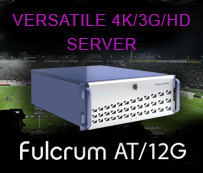What do we do with old hard drives that litter the warehouse?
Among the old huge, slow and heavy disk which where once insanely expensive, particularly stood out Micropolis 1991 (5.25, Full FH) SCSI hard drives.
There was a mischievous idea to test it for performance. We quickly found a SCSI controller with 8-bit FAST SCSI. Standard testing utility showed drive's brilliant performance and unmatched speed graph. I have not seen such speed in about 7 years. To be truthful, the initial speed of 8 and the final 3.7 megabytes /sec were unusual. But most importantly, the drive after 15 years proved to be workable! Its speed characteristics were just perfect in relation to the year of manufacture.
Back in 1997, this disc was selling for $4,500. Now USB FLASH with similar characteristics is $5. Progress!? Yes, but there is another side to all advantages.
Modern "spin" discs have very high read/write rate, huge volume and low price. This is the result of modern technology and algorithms of embedded software. The downside of this is that the drives have become less reliable and their speed performance graphs began to resemble a beard because of the huge and chaotic rate slowdowns. This is due to the fact that no hard drive platters are perfect. They have parts with unsatisfactory read-write performance which are bypassed by drive's firmware.
The lower peak performance may be ten times lower than the average rate expected by user. From the point of view of the manufacturer, such speed-rate drops are not errors. From the operating system point of view, an error is a timed-out write/read operation of 5-20 seconds! As a result, the user has a "working" hard drive, which constantly falls behind write/read operations.
In time zones of low quality on substrates will grow in size and degrade. The super high recording density explains the fact that stability begins to be affected by difference in temperature at writing and reading. As the consequence, the disc can "start thinking" for seconds while reading.
It is believed that use of RAID 0/3/5 technology can improve the overall performance of subsystem even with substandard components. This is misleading. So in multichannel video recording and replays, criteria of an acceptable subsystem is the guaranteed minimum recording speed in any situation. That means that the disc subsystem has to provide sufficient desired write/read speed at any moment. As already mentioned above, this is not possible without the use of specially selected drives.
The conclusions are quite simple:
- When you need a guaranteed write/read speed rate, use carefully selected s that have passed special tests.
- The second conclusion: if important information is recorded to a hard drive which did not pass the selection procedure, it is obligatory to duplicate this information on another. Especially since the price of the disc is often negligible relative to the value of the information it contains.



